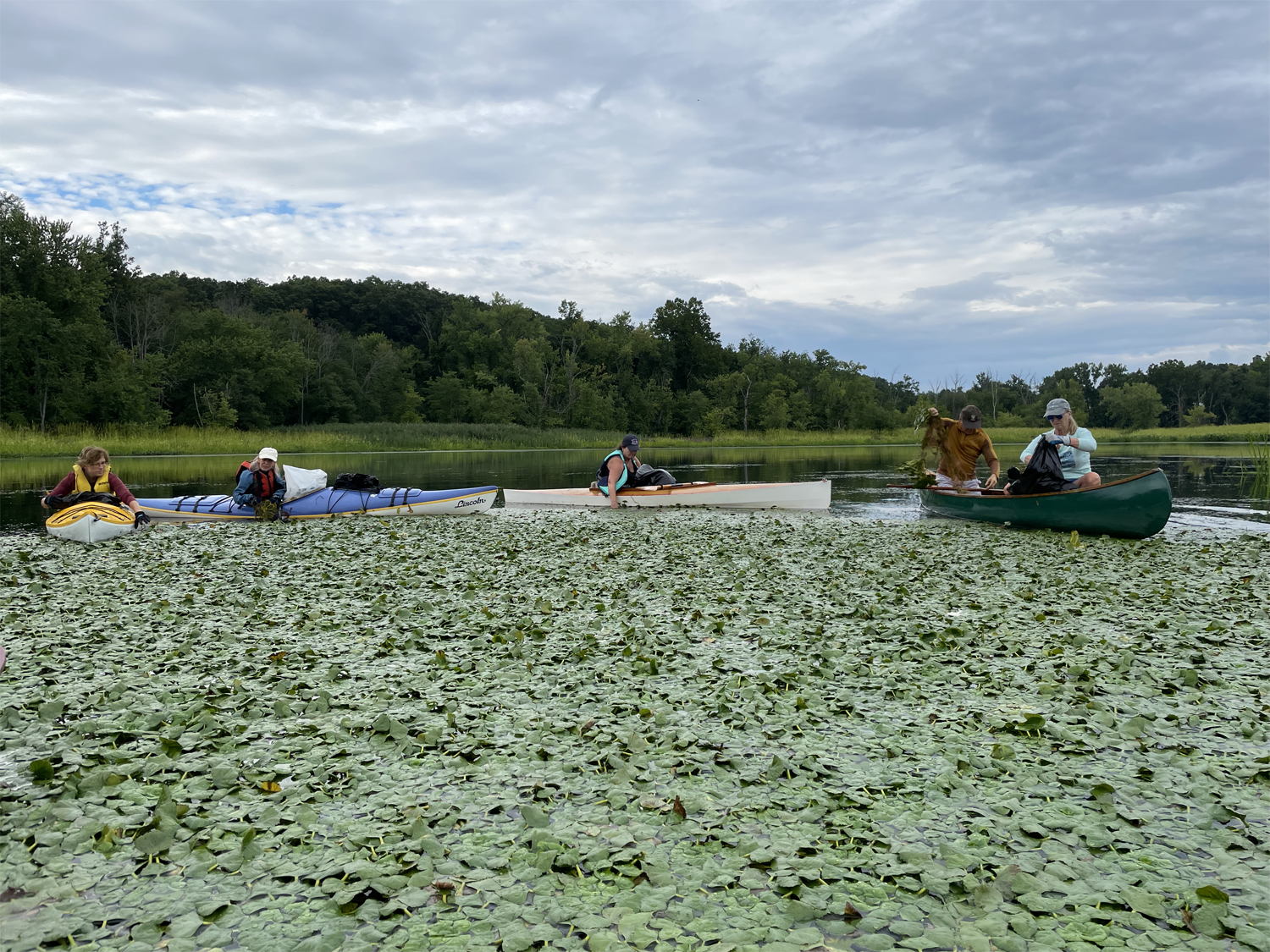The proliferation of invasive plants such as water chestnut and hydrilla in the Connecticut River, its tributaries, and local ponds has led to more common use of EPA-approved herbicides by government agencies such as the U.S. Army Corps of Engineers (USACE) and the U.S. Fish and Wildlife Service (FWS).

Paddlers work on a thick mat of water chestnut plants. If we can pull out the plants, the challenge becomes how to carry them, and then where to dispose of them.
The Jonah Center has asked these agencies, and others, for advice on how best to manage the water chestnut infestation in the Mattabesset River (Floating Meadows). The message we have heard is consistent. Hand-pulling is best where it is feasible. But there are some shallow areas with dense, stubborn infestations where hand-pulling by paddlers is not effective. Such areas represent a small percentage of the total surface area, but the seeds from these remote patches keep germinating in deeper areas, producing more patches that hand-pullers face each year. Every year, the seed bank in these coves and creeks grows.
The government agencies list above tell us that herbicides are the only effective option where hand-pulling is not productive. In this case, we are talking about 7 acres in the entire Floating Meadows. Scientists at the Connecticut Agricultural Experiment Station Office of Aquatic Invasive Species have said that proper use (by licensed applicators) of EPA-approved herbicides (of which there are very few approved for aquatic plants) does not endanger wildlife, since the chemicals are quickly absorbed by the plants, and what is not absorbed breaks down quickly. Another method we explored, mechanical removal, or mowing the plants, kills the frogs and turtles that hang out among the plants near the water surface. Allowing thick mats of plants to remain covering the water surface degrades the ecosystem for fish and birds that feed on fish by blocking the sunlight, oxygen, and water circulation that a healthy habitat requires. Allowing these thick mats to spread seriously endangers the habitat for fish and birds.
The Jonah Center has engaged the OAIS, the RiverCOG, and the Connecticut River Conservancy to help us consider herbicide use in those remote coves and creeks where hand-pulling has not been sufficient. Following these consultations, we solicited proposals from 3 companies. We have now engaged The Pond & Lake Connection to apply Diquat. This is a contact herbicide that is quickly absorbed by plants and quickly breaks down in the water so it does not spread from the application area, When used properly, it does not harm animal wildlife. There is no swimming restriction required after Diquat is used, which is a sign of its relative safety for animals. Still, we will warn the public to stay away from the area for 48 hours after Diquat has been applied.
While the timing of applications is subject to several factors (weather, water level, when the plants emerge) we expect that The Pond & Lake Connection will apply Diquat once around July 1 and once in late July.













